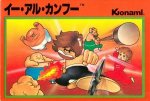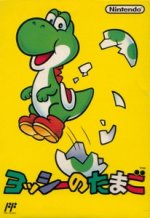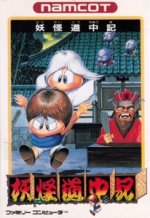Encouraged by these successes, Nintendo soon turned its attention to the North American market. Nintendo entered into negotiations with Atari to release the Famicom under Atari’s name as the name Nintendo Advanced Video Gaming System; however, this deal eventually fell apart. Subsequent plans to market a Famicom console in North America featuring a keyboard, cassette data recorder, wireless joystick controller, and a special BASIC cartridge under the name "Nintendo Advanced Video System" likewise never materialized.
In June 1985, Nintendo unveiled its American version of the Famicom at the Consumer Electronics Show (CES). It rolled out its first systems to limited American markets on October 18, 1985, following up with a full-fledged North American release of the console in February of the following year. Nintendo simultaneously released eighteen launch titles: 10-Yard Fight, Baseball, Clu Clu Land, Donkey Kong Jr. Math, Duck Hunt, Excitebike, Golf, Gyromite, Hogan’s Alley, Ice Climber, Kung Fu, Mach Rider, Pinball, Stack-Up, Tennis, Wild Gunman, Wrecking Crew, and Super Mario Bros.
Shortly before ceasing production of the system in North America, Nintendo released a radically redesigned console (known as the AV Family Computer in Japan and the Control Deck in North America) that corrected a number of problems with the original hardware.As the 1990s dawned, however, renewed competition from technologically superior systems such as the 16-bit Sega Mega Drive (called the Sega Genesis in North America) marked the end of the NES’s dominance. Eclipsed by Nintendo's own Super Nintendo Entertainment System (SNES), the NES’s user base gradually waned. Nintendo continued to support the system in North America through the first half of the decade, even releasing a new version of the system's console, under the name Control Deck (model NES-101) in North America, to address many of the design flaws in the original console hardware.
A similarly redesigned console was also released in Japan as the AV family Computer. The final games released for the system were as follows: in Japan, Adventure Island IV, and, in North America, among unlicensed titles, Sunday Funday was the last, whereas Wario's Woods was the last licensed game (also the only one with an ESRB rating). In the wake of ever decreasing sales and the lack of new software titles, Nintendo of America officially discontinued the NES by 1995. Despite this, Nintendo of Japan kept producing new Nintendo Famicom units up until September 2003, when it discontinued the line. Even as developers ceased production for the NES, a number of high-profile video game franchises and series for the NES were transitioned to newer consoles and remain popular to this day. Nintendo's own Super Mario Bros., The Legend of Zelda, and Metroid franchises debuted on the NES, as did Capcom's Mega Man franchise, Konami's Castlevania franchise, and Squaresoft's Final Fantasy and Enix's Dragon Quest (now Square Enix's) franchises.
Nintendo of Japan continued to repair Famicom consoles until October 31, 2007, attributing the decision to discontinue support to an increasing shortage of the necessary parts.
Although the Japanese Famicom, North American and European NES versions included essentially the same hardware, there were certain key differences between the systems:
Different case design. The Famicom featured a top-loading cartridge slot, a 15-pin expansion port located on the unit’s front panel for accessories (as the controllers were hard-wired to the back of the console), and a red and white color scheme. The NES featured a front-loading cartridge slot, and a more subdued gray, black and red color scheme. An expansion port was found on the bottom of the unit, and the cartridge connector pinout was changed.
60-pin vs. 72-pin cartridges. The original Famicom and the re-released AV Family Computer both utilized a 60-pin cartridge design, which resulted in smaller cartridges than the NES, which utilized a 72-pin design. Four pins were used for the 10NES lockout chip. Ten pins were added that connected a cartridge directly to the expansion port on the bottom of the unit. Finally, two pins that allowed cartridges to provide their own sound expansion chips were removed. Many early games (such as Stack-Up) released in North America were simply Famicom cartridges attached to an adapter (such as the T89 Cartridge Converter) to allow them to fit inside the NES hardware. Nintendo did this to reduce costs and inventory by using the same cartridge boards in North America and Japan.
Peripherals. A number of peripheral devices and software packages were released for the Famicom. Few of these devices were ever released outside of Japan.
Family BASIC is an implementation of BASIC for the Famicom. It allowed the user to program his own games. Many programmers got their first experience on programming for the console this way. Famicom MODEM is a modem that allowed connection to a Nintendo server which provided content such as jokes, news (mainly about Nintendo), game tips, and weather reports for Japan; it also allowed a small number of programs to be downloaded. A modem was, however, tested in the United States, by the Minnesota State Lottery. It would have allowed players to buy scratchcards and play the lottery with their NES. It was not released because minors were able to play the lottery illegally and anonymously.
External sound chips. The Famicom had two cartridge pins that allowed cartridges to provide external sound enhancements. They were originally intended to facilitate the Famicom Disk System’s external sound chip. These pins were removed from the cartridge port of the NES, and relocated to the bottom expansion port. As a result, individual cartridges could not make use of this functionality, and many NES localizations suffered from technologically inferior sound compared to their equivalent Famicom versions. Castlevania III: Dracula's Curse is a notable example of this problem.
Unlike the NES, the Famicom's controllers were hardwired to the system itself. The 2nd controller eliminated the Start and Select buttons, replacing it with a microphone and a volume control slider.Hardwired controllers. The Famicom’s original design includes hardwired, non-removable controllers. In addition, the second controller featured an internal microphone for use with certain games and lacked SELECT and START buttons. Both the controllers and the microphone were subsequently dropped from the redesigned AV Famicom in favor of the two seven-pin controller ports on the front panel used in the NES from its inception.
Lockout circuitry. The Famicom contained no lockout hardware, and, as a result, unlicensed cartridges (both legitimate and bootleg) were extremely common throughout Japan and the Far East. The original NES (but not the top-loading NES 2) contained the 10NES lockout chip, which significantly increased the challenges faced by unlicensed developers. Tinkerers at home in later years discovered that disassembling the NES and cutting the fourth pin of the lockout chip would change the chip’s mode of operation from "lock" to "key", removing all effects and greatly improving the console’s ability to play legal games, as well as bootlegs and converted imports. The European release of the console used a regional lockout system that prevented cartridges released in region A from being played on region B consoles, and vice versa.
Audio/video output. The original Famicom featured an RF modulator plug for audio/video output, while the original NES featured both an RF modulator and RCA composite output cables. The AV Famicom featured only RCA composite output, and the top-loading NES 2 featured only RF modulator output. The original North American NES was the first game console to feature direct composite video output so people could hook it up to a stand-alone composite monitor.
Third-party cartridge manufacturing. In Japan, six companies, namely Nintendo, Konami, Capcom, Namco, Bandai and Jaleco, manufactured the cartridges for the Famicom. This allowed these companies to develop their own customized chips designed for specific purposes, such as Konami's VRC 6 and VRC 7 sound chips that increased the quality of sound in their games.


























 Save time
Save time

